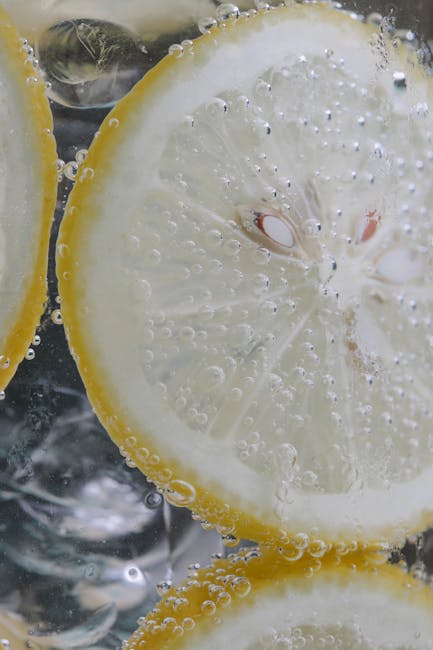The Salt and Ice Cube Trick: A Deep Dive into its Science, Uses, and Safety
The seemingly simple act of adding salt to ice cubes to make them colder is a fascinating demonstration of basic chemistry and physics. This common trick, often used for chilling drinks quickly or creating a makeshift ice bath, has a surprisingly rich scientific basis and a wide range of applications. But it’s crucial to understand both the science behind it and the safety precautions to ensure you’re using this technique effectively and responsibly.
The Science Behind the Salt and Ice Cube Trick
The magic lies in the concept of freezing point depression. Pure water freezes at 0°C (32°F). However, when you add a solute – like salt (sodium chloride, NaCl) – to water, it disrupts the formation of ice crystals. The salt ions interfere with the water molecules’ ability to bond and form the regular crystalline structure of ice. This requires a lower temperature for the solution to freeze.
The process involves several steps:

- Dissolution: The salt dissolves in the thin layer of water surrounding the ice cube.
- Ionization: The salt dissociates into sodium (Na+) and chloride (Cl-) ions.
- Freezing Point Depression: The presence of these ions lowers the freezing point of the water. The more salt you add, the lower the freezing point becomes.
- Melting and Cooling: As the salt dissolves, it absorbs heat from the surrounding environment, including the ice cube itself. This causes some of the ice to melt, absorbing energy in the process. This melting process is endothermic, meaning it requires energy, which is drawn from the immediate surroundings, thus lowering the overall temperature.
This process continues until a new equilibrium is reached at a lower temperature. The resulting mixture of ice and salt water will be significantly colder than 0°C, often reaching temperatures as low as -21°C (-6°F), depending on the concentration of salt and the surrounding conditions. This temperature drop is what allows for the rapid chilling effect often observed.
Practical Applications of the Salt and Ice Cube Trick
Beyond simply making drinks colder, the salt and ice cube trick has several practical applications:
1. Rapid Cooling of Beverages:
This is the most common use. Adding salt to ice in a cooler or bucket significantly reduces the temperature of drinks, leading to faster chilling. This is particularly useful for outdoor events or when you need to chill drinks quickly.
2. Homemade Ice Cream:
The salt-ice mixture is a crucial component in many traditional ice cream making methods. The low temperature created by the mixture freezes the ice cream base more quickly and evenly, resulting in a smoother, creamier texture.

3. Creating Ice Baths for Chemical Reactions or Experiments:
In scientific settings, a salt-ice bath provides a consistent and easily controllable low-temperature environment for certain chemical reactions or experiments that require precise temperature regulation.
4. Treating Injuries:
While not a primary treatment, a salt-ice pack can provide temporary relief from pain and inflammation associated with injuries. The cold temperature numbs the affected area and reduces swelling. However, it’s crucial to wrap the ice pack in a cloth to prevent direct skin contact and frostbite.
5. Food Preservation (Limited Application):
In some traditional food preservation methods, a salt-ice mixture might be used to create a low-temperature environment to slow down bacterial growth and extend shelf life. However, this is not a primary food preservation method and should be used cautiously.
Safety Considerations:
While the salt and ice cube trick is simple and effective, it’s essential to follow safety guidelines:
- Avoid Direct Skin Contact: Never apply a salt-ice mixture directly to your skin. The low temperature can cause frostbite and severe tissue damage. Always wrap the ice pack in a cloth or towel.
- Supervise Children: Keep children away from salt-ice mixtures to prevent accidental frostbite or ingestion of salt.
- Proper Disposal: Dispose of the salt-ice mixture responsibly. Avoid dumping it down drains, as the high salt concentration can damage plumbing.
- Don’t Overdo the Salt: While more salt lowers the temperature further, excessive salt can be less effective and create a slushy mixture that’s less efficient at cooling.
- Consider the Type of Salt: Rock salt (coarse) is generally preferred because it dissolves slower than table salt, providing a more consistent cold temperature.
Salt and Ice: Different Types of Salt and Their Effects
The type of salt used can affect the effectiveness of the freezing point depression. Rock salt, due to its larger crystals and slower dissolution rate, is often preferred for creating cold baths or ice cream making. Table salt, while readily available, dissolves more quickly, leading to a less stable and potentially less effective temperature reduction. Other salts, like calcium chloride, can produce even lower temperatures but are not usually used for household applications.
Beyond the Basics: Experimenting with the Salt and Ice Cube Trick
The salt and ice cube trick offers a simple, yet compelling opportunity to explore the principles of chemistry and thermodynamics. Experiments can include:

- Varying the Salt Concentration: Experiment with different amounts of salt to see how it affects the final temperature.
- Using Different Types of Salt: Compare the temperature reduction using rock salt, table salt, and other types of salts.
- Measuring the Temperature: Use a thermometer to accurately measure the temperature of the salt-ice mixture at different times and salt concentrations.
- Observing the Ice Melting Rate: Note how the rate of ice melting changes with different salt concentrations.
By undertaking these experiments, you can gain a deeper understanding of the underlying scientific principles and the practical applications of this simple yet powerful trick. Always remember to prioritize safety throughout your experiments.
Conclusion: A Simple Trick with Profound Implications
The salt and ice cube trick is more than just a convenient way to chill a drink. It’s a testament to the powerful effects of basic chemical and physical principles. Understanding the science behind it allows for safer and more effective utilization of this common technique across various applications, from cooling beverages to supporting scientific experiments. By appreciating both its utility and its potential hazards, we can fully leverage the power of this seemingly simple trick.

